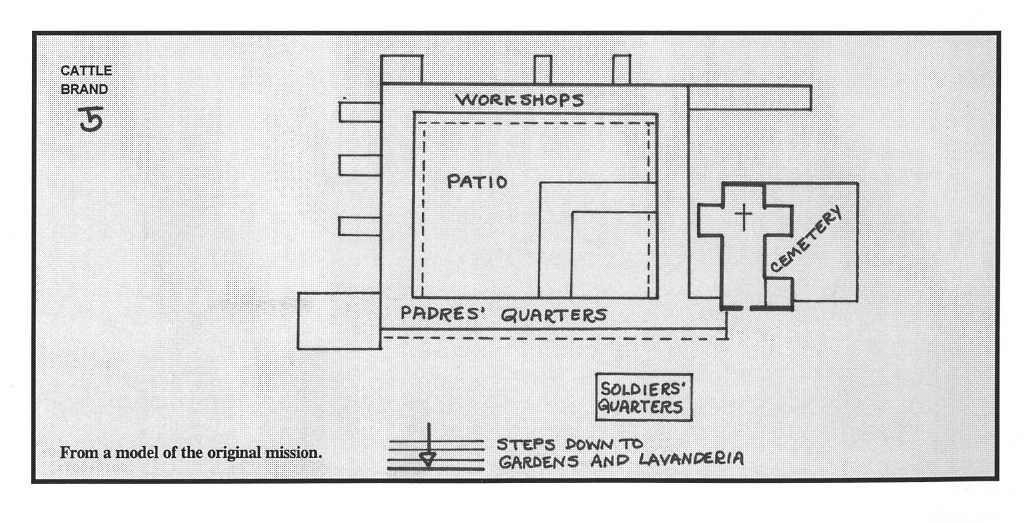| ||||
|
| ||||
|
MISSION
SAN LUIS REY DE FRANCIA
4050 Mission Avenue
San
Luis Rey,
CA
92068
Established: June 13, 1798
By: Father Fermin Lasuén, Franciscan missionary and successor to Junípero Serra as President of the missions.
Order: 18th of the 21 missions.
Location: 40 miles north of San Diego, in a valley about five miles from the Pacific Ocean.
Named: For Louis IX, King of France (1215-1270), made a saint for his part in the Crusades. Also known as King of the Missions because it was the largest.
California Historical Landmark No. 239
DESIGN OF THE MISSION
Church: 180 feet long, 28 feet wide, 30 feet high. Built of adobe bricks; faced with burnt bricks. Tile roof.
Style: Cruciform, or cross, design (one of two missions in this style). The cross is formed by a long nave (chapel) crossed by a shorter transept with two side altars. At the crossing is an octagonal (eight-sided) domed ceiling made of pine wood, centered with a smaller dome of glass to let in the light (the only mission with such a dome). The interior, including each ceiling beam and the pillars lining the walls, is colorfully painted in native designs.
Walls: Vary from six to nine feet thick.
Bell Tower: A single domed tower served as a bell tower and as a lookout from which a guard could signal workers in the fields or announce the approach of visitors.
Mission Compound: The mission buildings covered six acres around a 500-foot square patio. There were more than 200 arches along the walkways that led to the dormitories, an infirmary, kitchen, storage rooms, and workshops for carpenters, weavers, spinners, soap and candle makers. The padres' wing had a balcony over it. In the 1890’s, a second story was added to the building.
Mission Grounds: In 1830 the mission had 30 square miles of land on which they grazed 27,000 head of cattle, 26,000 sheep, 2,000 horses, plus pigs, goats, ducks, chickens, and geese. There were large wheat fields, vegetable gardens, vineyards that produced fine wine, and groves of olive and orange trees. Close to the mission compound was a grand set of steps leading down to an elaborate sunken garden.
Water System: An intricate aqueduct system brought water from a nearby river through a series of 12 underground pipe lines made of burnt brick. A charcoal filtering system purified water for drinking. Water from springs flowed out of the mouths of two stone figures into a large lavandería (laundry), where the mission women scrubbed their clothes. The water then went into the fields for irrigation.
Antonio de Pala: In 1815 a branch or sub-mission (also called an asistencia) was established about 20 miles east of Mission San Luís Rey, at the foot of the Palomar Mountains. This church, almost as grand as a main mission, has a chapel 144 feet by 27 feet. The bell tower has two arched windows, one above the other, in which the bells hang. A small cross tops the tower. The buildings serve as a church and school for residents of the Pala Indian Reservation (established in 1903).

EARLY HISTORY
1798 Father Lasuén founded the mission, then turned it over to Father Antonio Peyri, who was in charge there for 34 years.
1802 First adobe church built to hold 1,000 worshippers.
1811 Work began on a larger church, with assistance from the soldiers at the San Diego presidio as well as from the Indians (called Luiseños).
1815 Official dedication of new church on October 4.
1815-30 Construction of new buildings was almost continuous during this time.
1834 Mission secularized, taken from the Catholic Church, and the buildings sold to private owners.
1846 Occupied by U.S. Army troops under Captain Frémont.
1865 Some mission buildings and 65 acres of land returned to the Catholic Church.
MISSION SAN LUIS REY TODAY
The neglect that began in 1834 continued after its return to the Catholic Church. By 1892 most of the buildings around the patio had collapsed and the dome of the church had fallen. Many works of art and even tiles from the roof had disappeared. In 1893 some Franciscan monks began to restore the mission as a seminary for training new priests. Father Joseph O'Keefe guided this restoration in which fountains were uncovered, bells were hung again, and old treasures found and returned to the mission.
Mission San Luís Rey is now owned by the Franciscans and serves as a parish church and religious retreat center. An excellent museum has recreations of a mission kitchen, workshop, and a padre's bedroom-cell. Some items on display were brought here by Father Serra.
In the middle of the courtyard is a pepper tree planted in 1830, thought to be the first pepper tree in California. Mission workers dried the peppercorns and ground them for seasoning.
The restored buildings are painted a gleaming white. Visitors can see the original copper baptismal font, the wooden pulpit, and a statue of Louis IX, patron saint of the mission.
To the right of the entrance to the church is an octagonal room with a domed ceiling, decorated with many paintings and with arches and columns made to look like marble. This small chapel, now called the Chapel of the Madonna, was originally the Mortuary Chapel, where mission people could go to mourn for the dead. The cemetery is still functioning as a place where people of all faiths may be buried.
